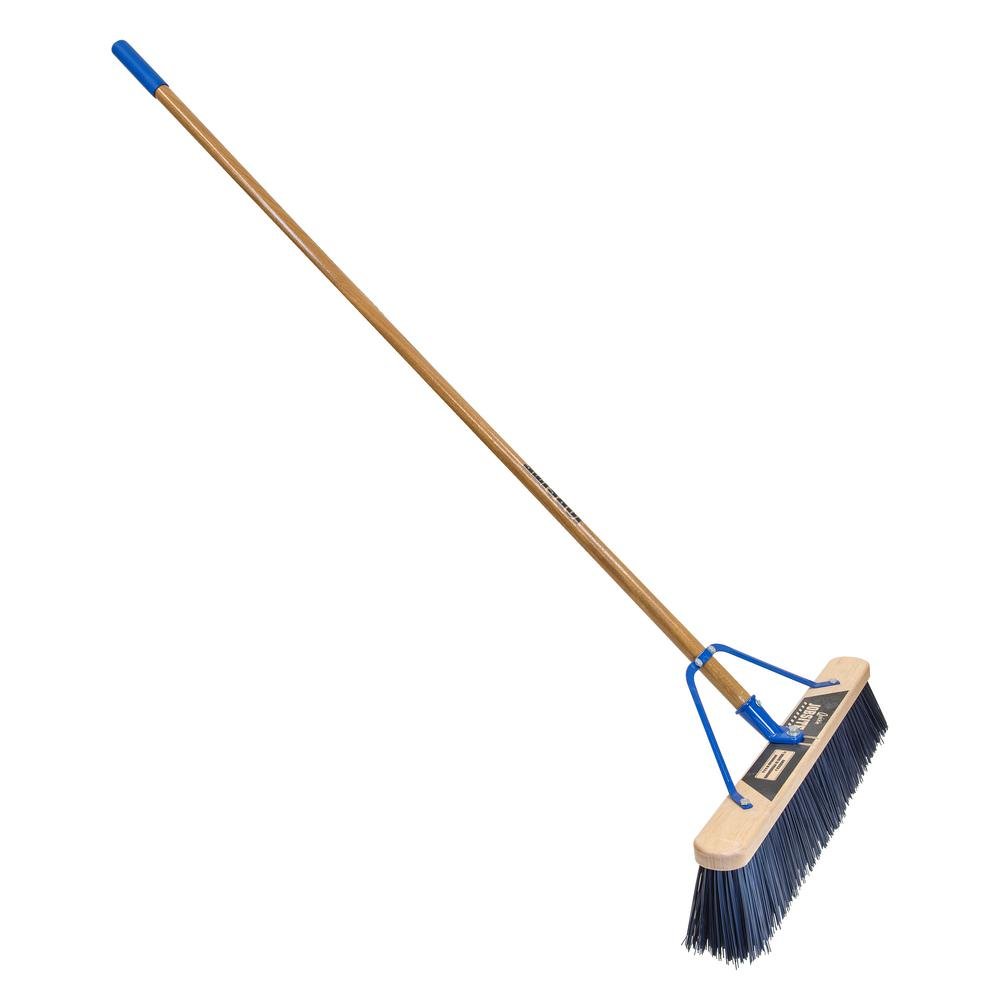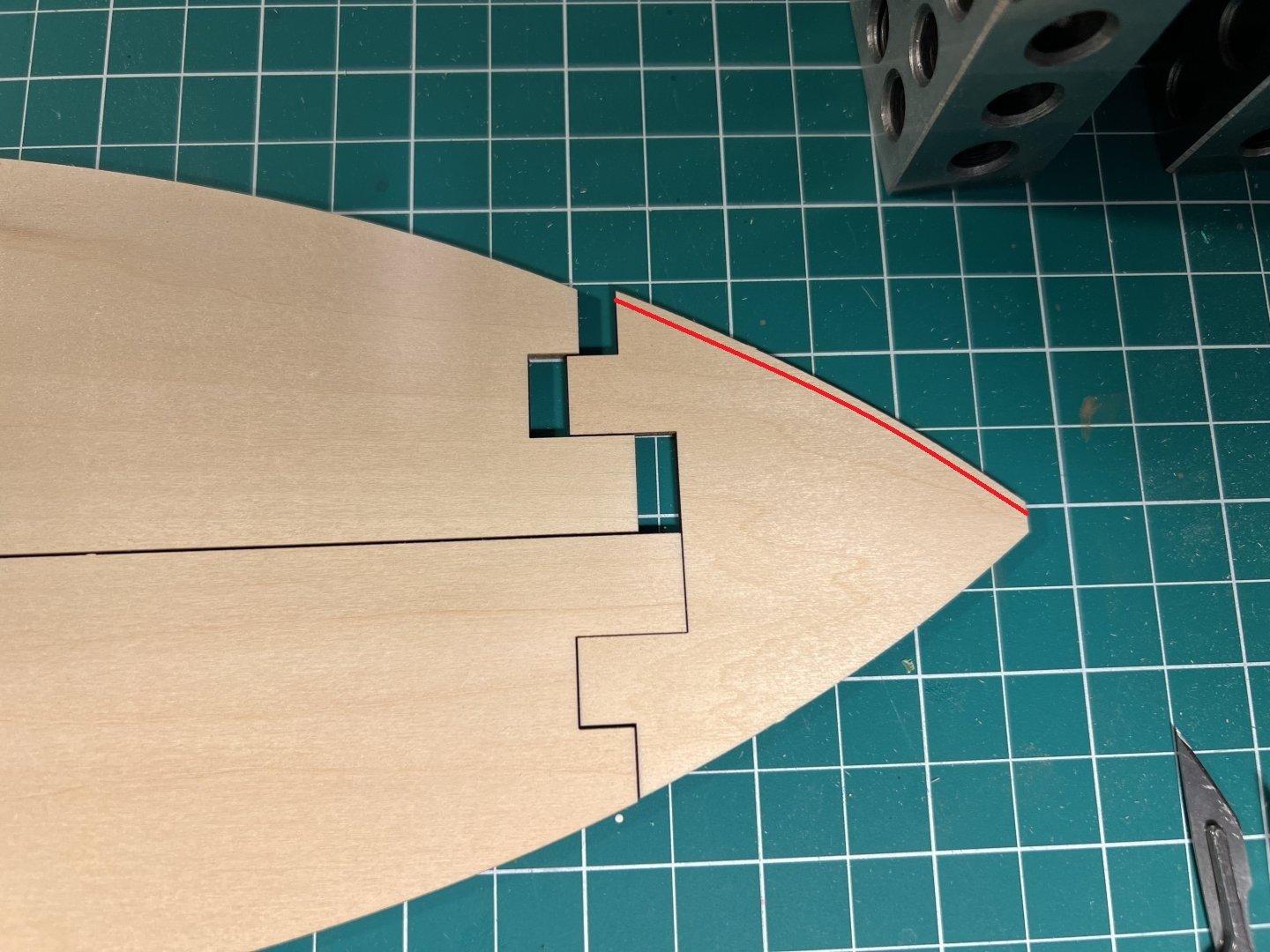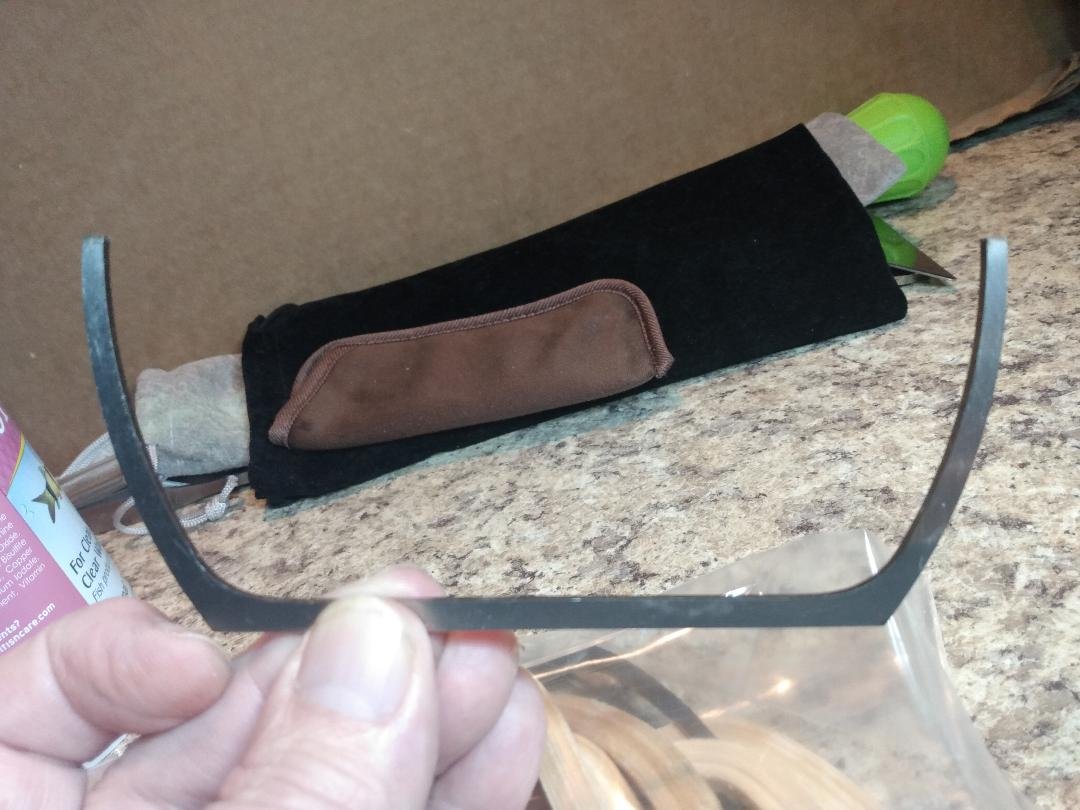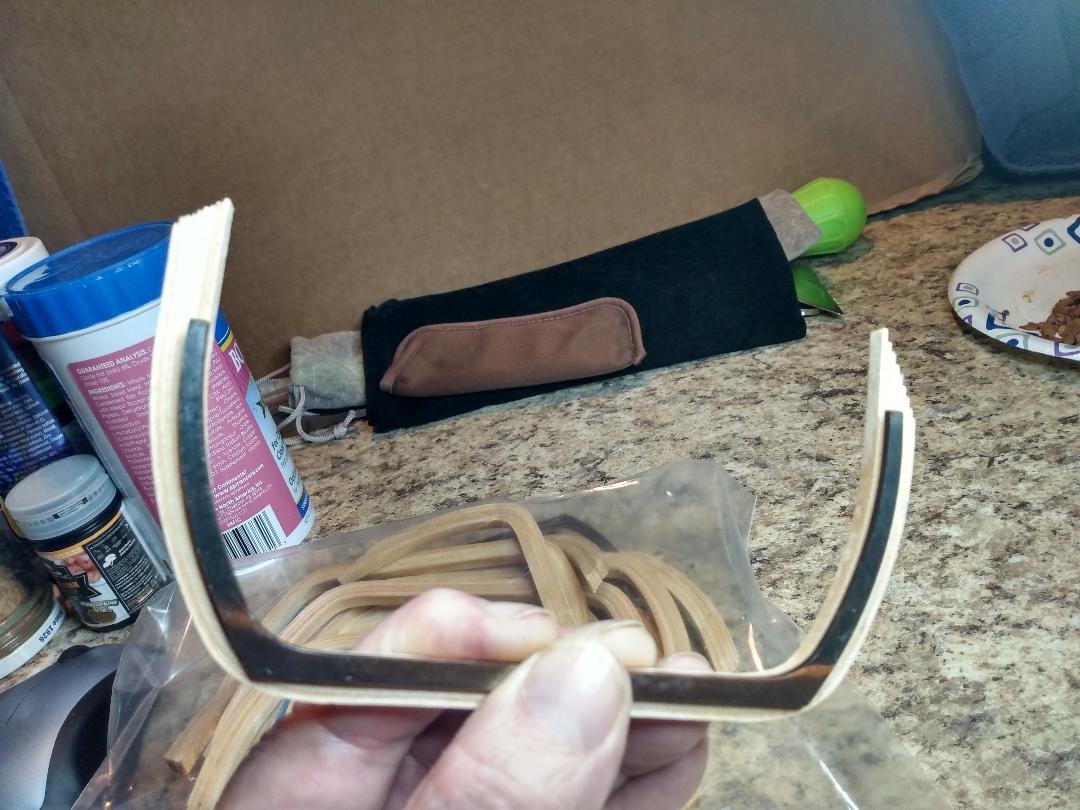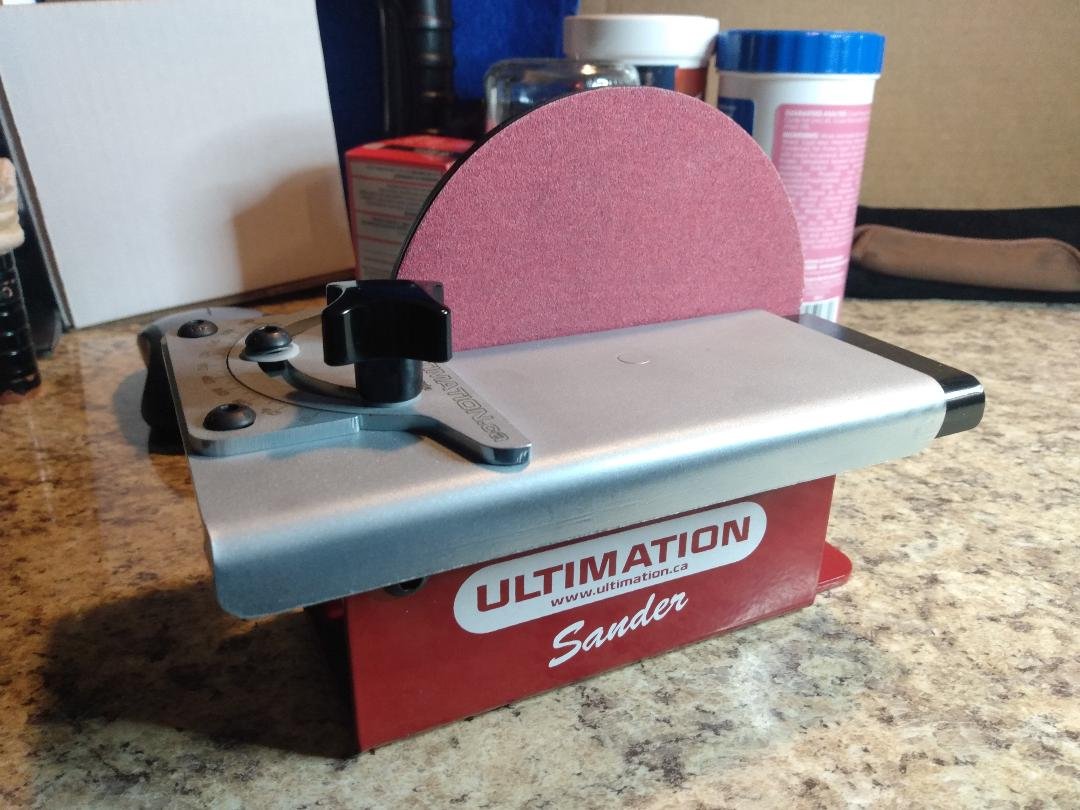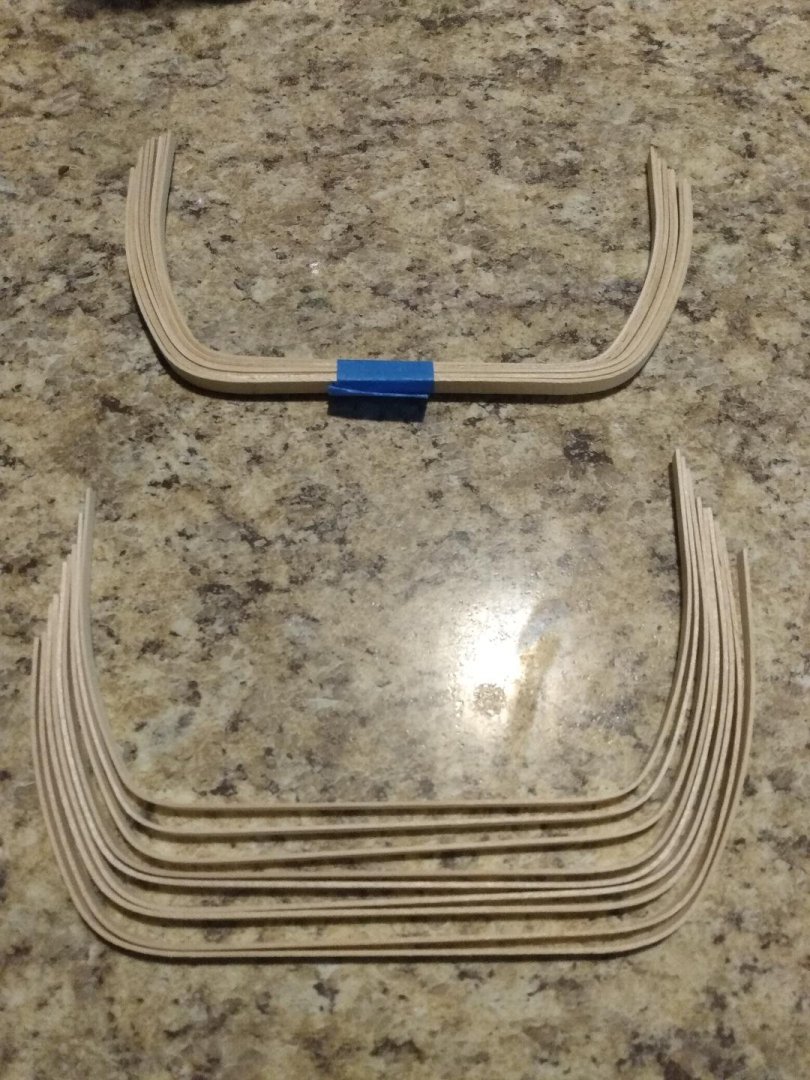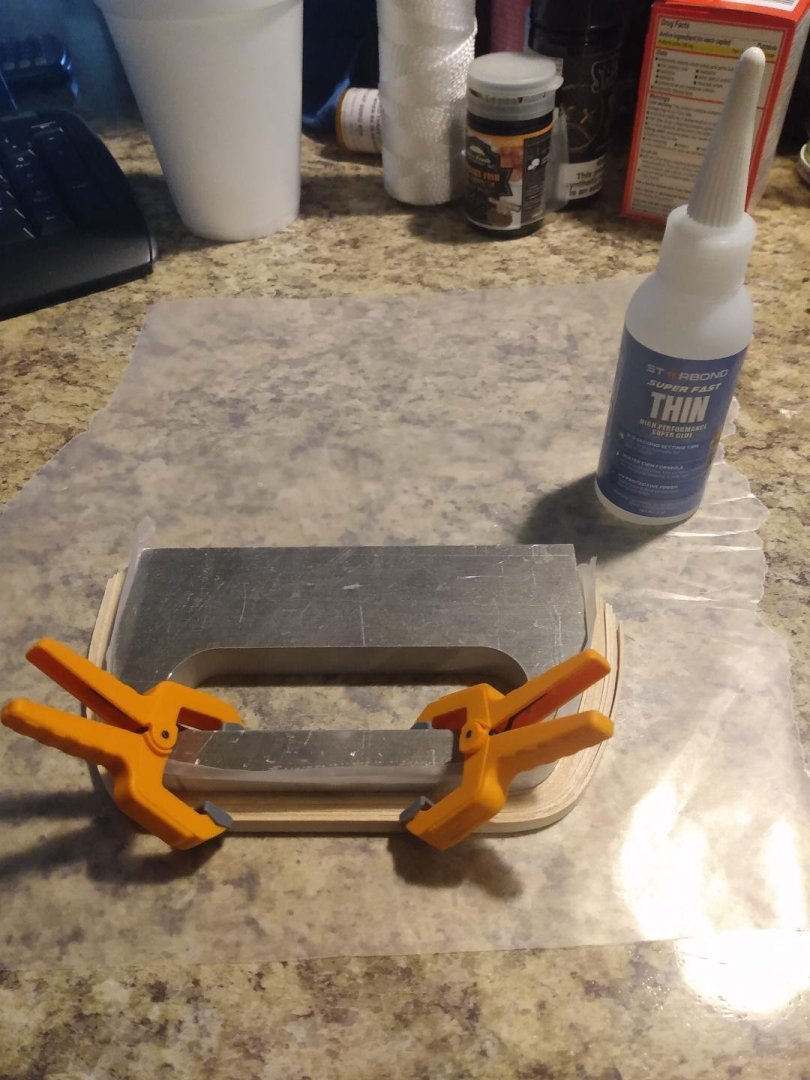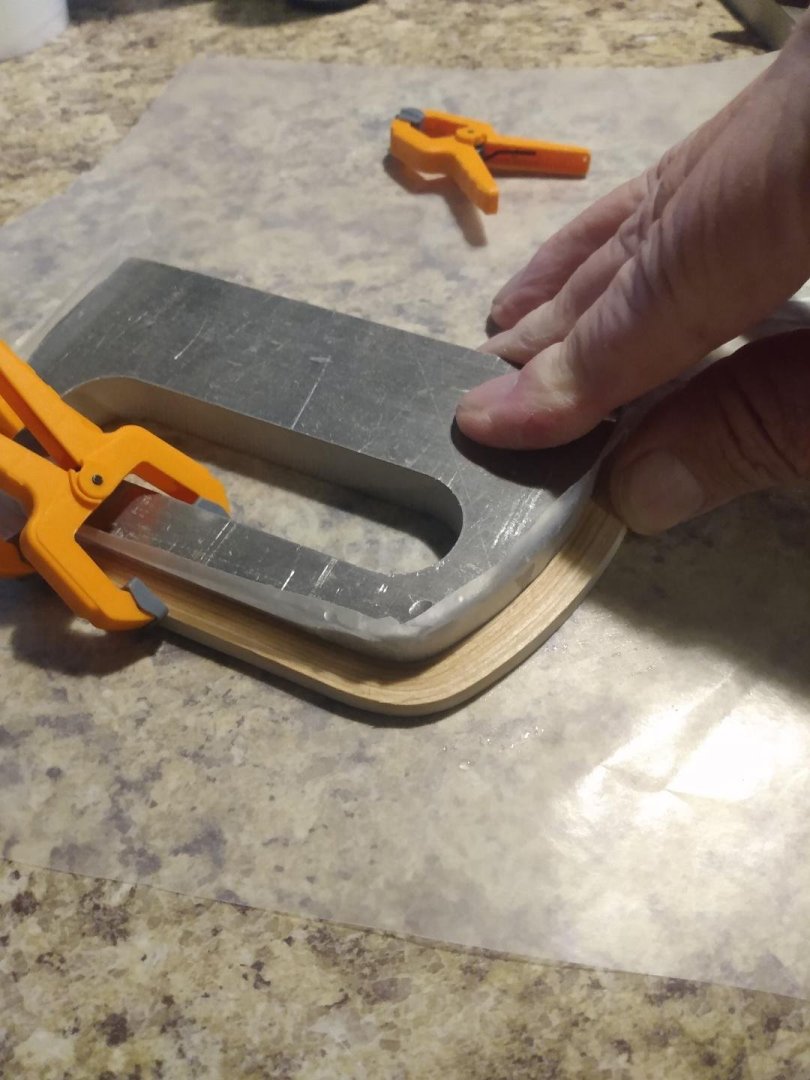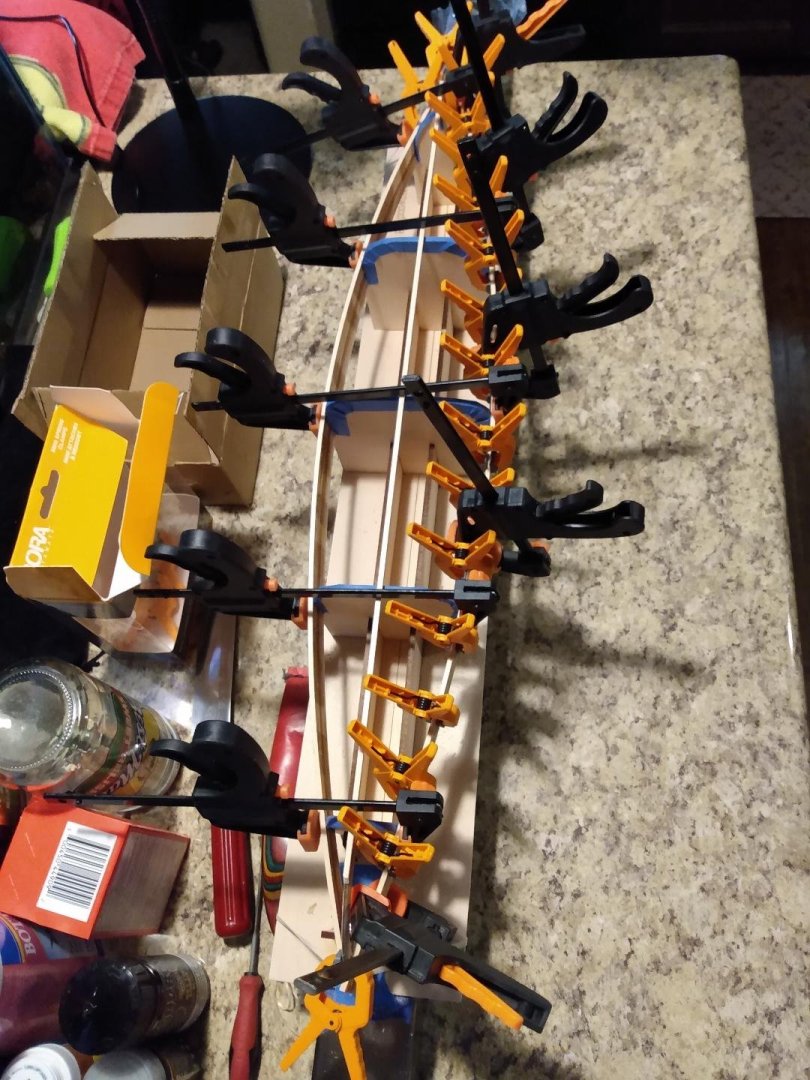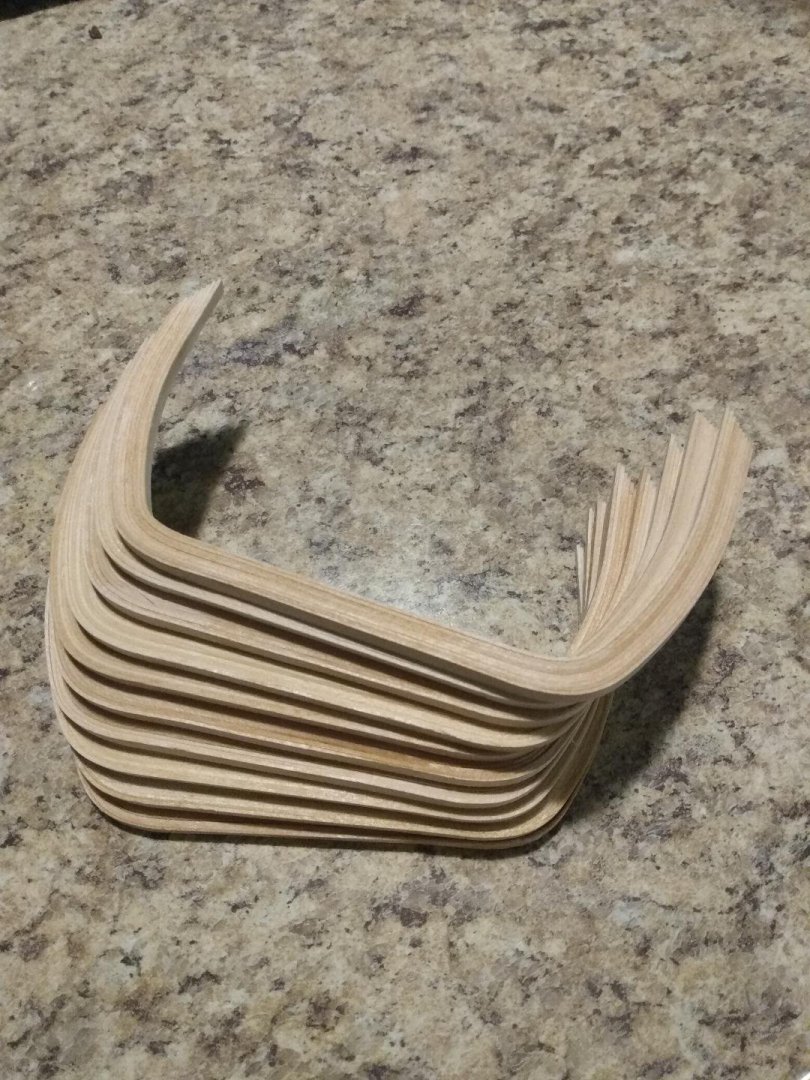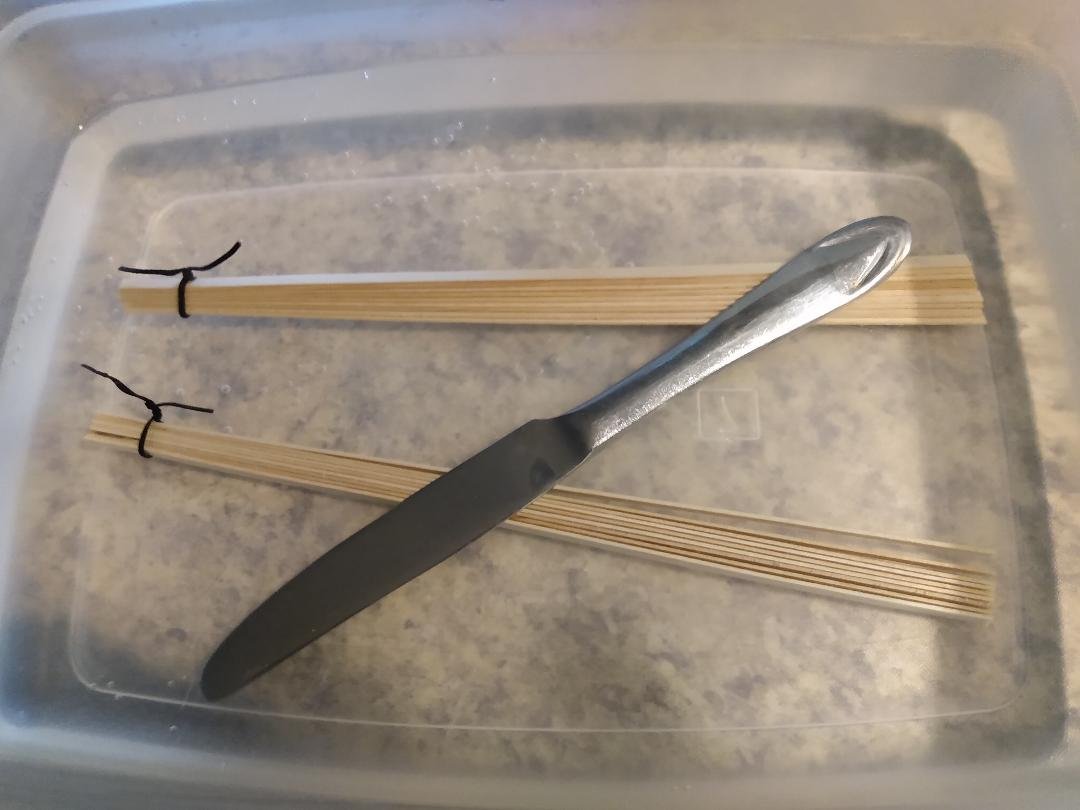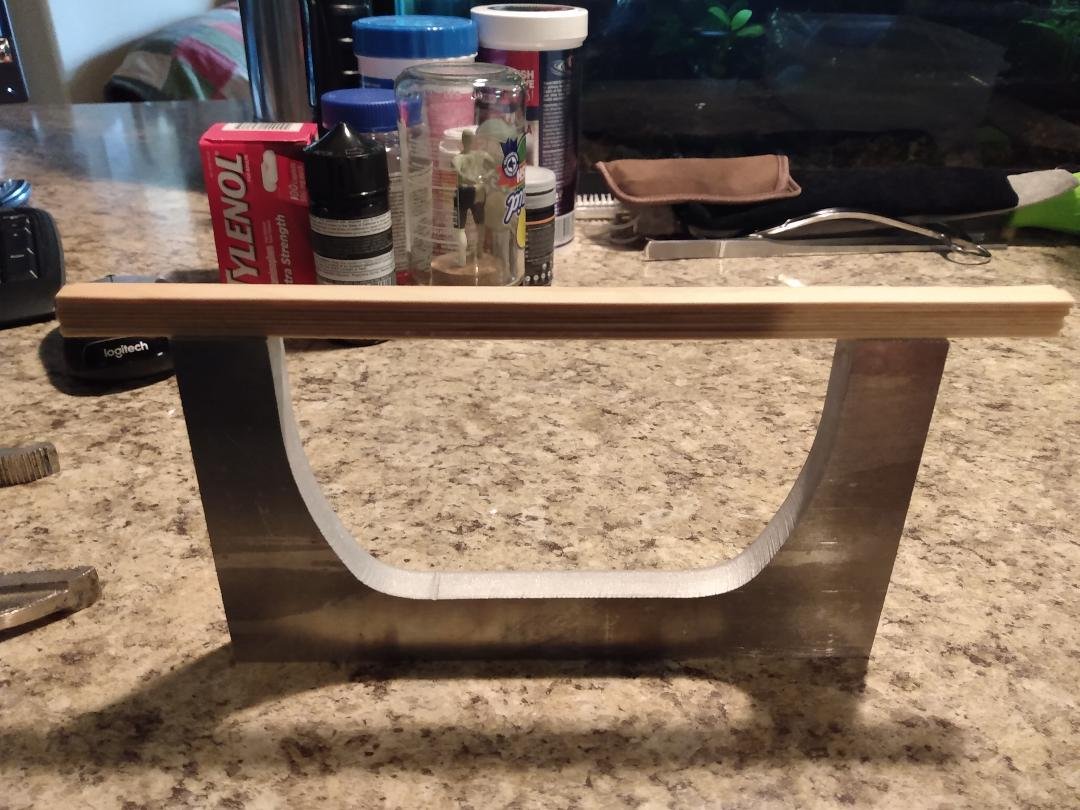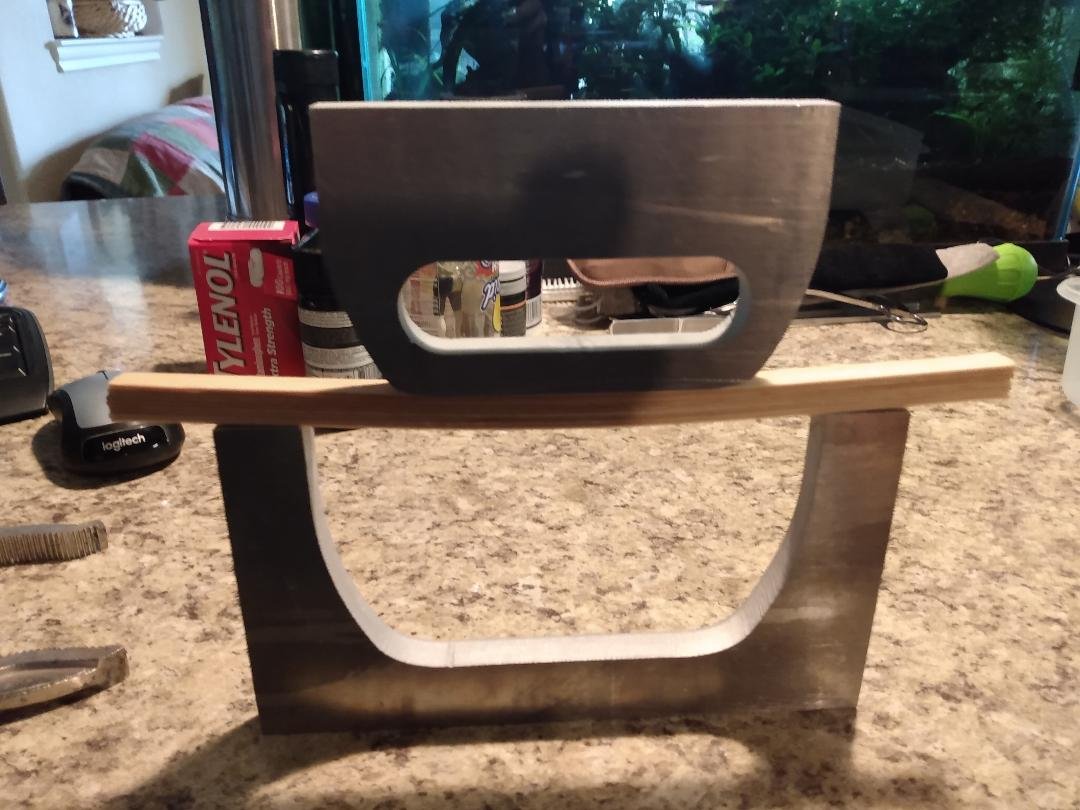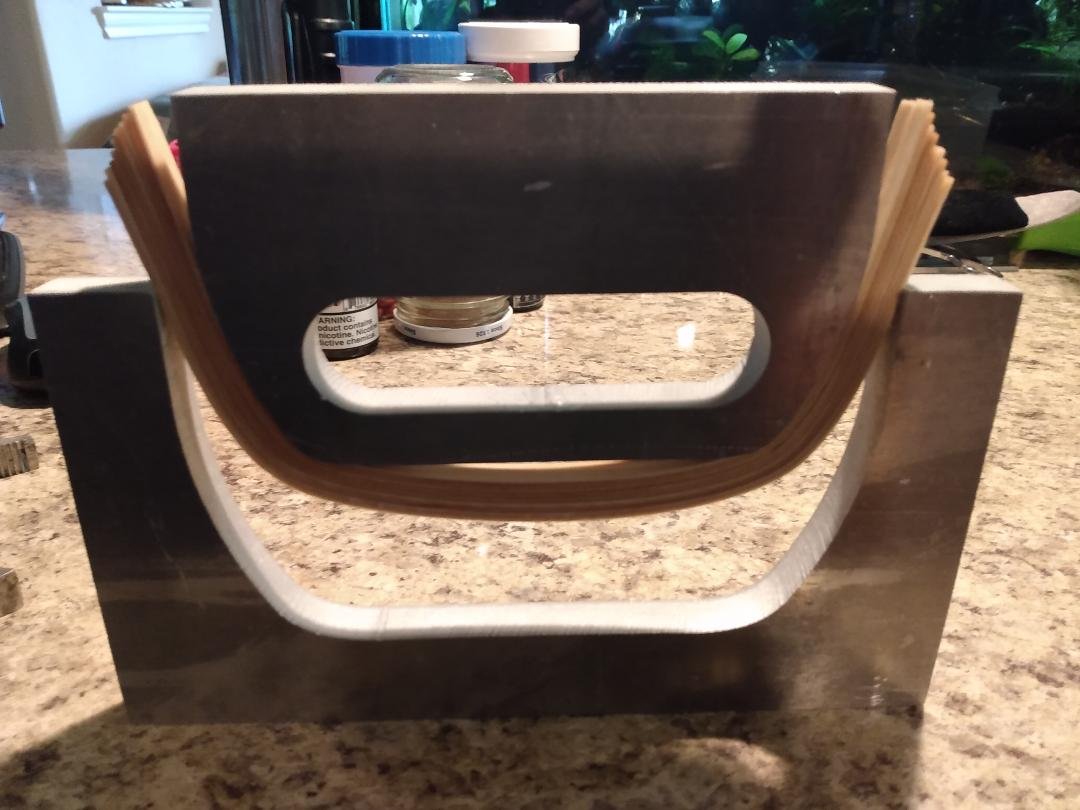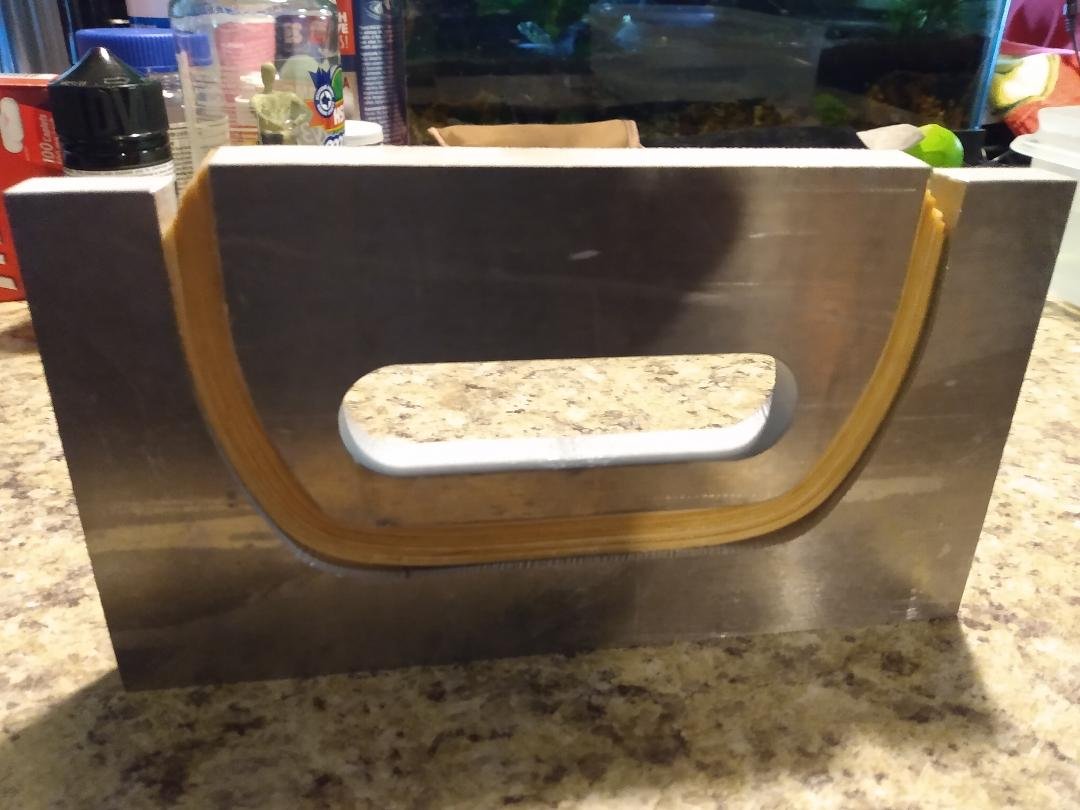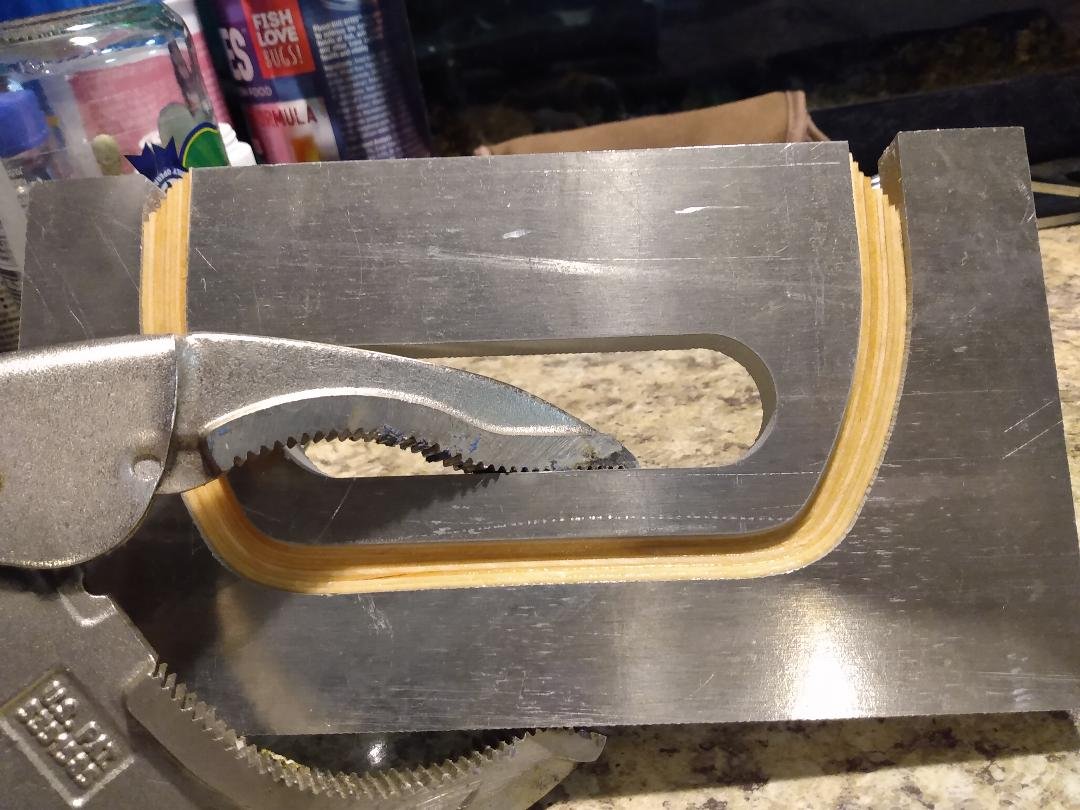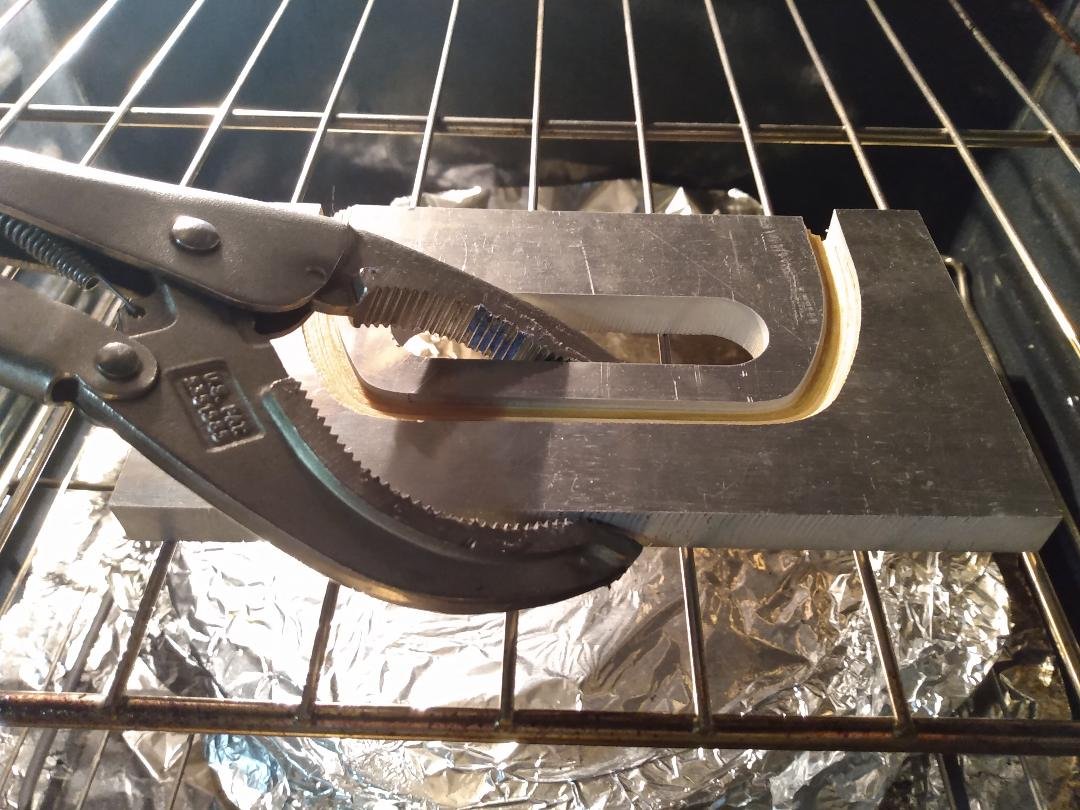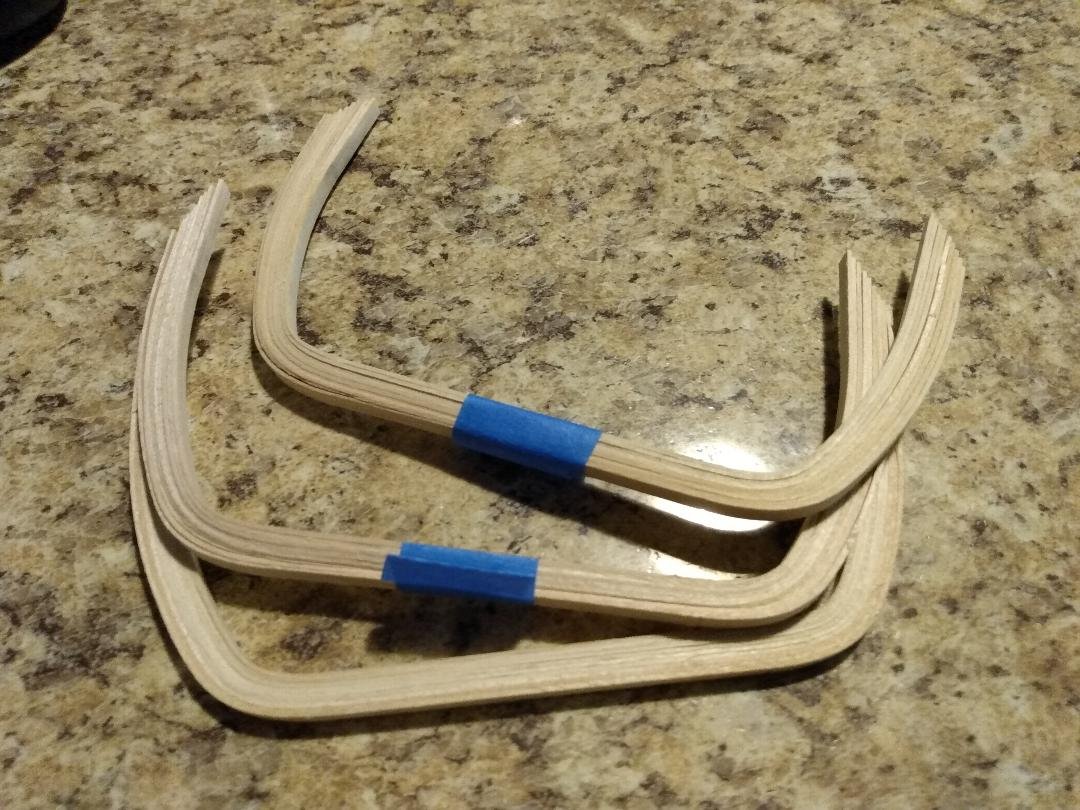-
Posts
725 -
Joined
-
Last visited
Content Type
Profiles
Forums
Gallery
Events
Everything posted by tmj
-

What Am I Missing
tmj replied to acaron41120's topic in Building, Framing, Planking and plating a ships hull and deck
Heavy emphasis on 'paper'! The thinner the better! Thickness creates errors. The thicker the paper, the more exaggerated the error. 😉 -
I designed this push-broom many years ago. What separates this broom from all the rest is that I designed it to be pushed by 'someone else'. It's been a big hit!
- 732 replies
-
- Lula
- sternwheeler
-
(and 1 more)
Tagged with:
-
Nobody can tell you what you are truly capable of accomplishing... not even yourself! If you find something that you like, "Go for it!" Take your time and advance your skills as you go. Practice any new operations that you are unsure about using scrap materials first. Odds are that you'll do just fine on any model that you choose! Confidence is a big thing, and confidence comes from building upon past accomplishments via new endeavors. Don't view the somewhat more advanced skill level of the Syren as something to be afraid of... see it as your newest achievable 'goal' to take on! 🙂 "Our doubts are traitors that make us lose the good that we oft might win by our fears to even attempt!" ... William Shakespeare
-
Simply 'Fantastic' craftsmanship!
- 301 replies
-
- Constitution
- Bluejacket Shipcrafters
-
(and 1 more)
Tagged with:
-
My sentiments, exactly! Great job, Glen!
- 301 replies
-
- Constitution
- Bluejacket Shipcrafters
-
(and 1 more)
Tagged with:
-
I don't know if this is true, but I read somewhere that while in port ships were often docked with their bow facing into the wind, if possible, for various reasons. If this is true your constitution is parked backwards, evidence via the direction that the flags are blowing. 😐
- 301 replies
-
- Constitution
- Bluejacket Shipcrafters
-
(and 1 more)
Tagged with:
-
I'd hit the like button, but I don't really like this this sort of thing at all. "Fingers are crossed!"
- 732 replies
-
- Lula
- sternwheeler
-
(and 1 more)
Tagged with:
-
Really nice-looking, clean, crisp model! Good job! So.... what's 'next'?
- 47 replies
-
- Annapolis Wherry
- Chesapeake Light Craft
-
(and 1 more)
Tagged with:
-

Gunboat Philadelphia 1776 by tmj
tmj replied to tmj's topic in - Build logs for subjects built 1751 - 1800
Progress has been slow due to the laser breaking and preventing me from cutting my finished frame sanding templates, but all is well now. I cut 4 templates yesterday. There will be 18 sets of frames to sand, so I cut 4 templates to prevent me from sanding away the edges of any one template and creating inaccurately shaped parts. I used stainless steel to make sure my templates don't rust should it take me a while to sand all of the frames. I'll attach the template to the laminated frames with either 2-sided tape, or rubber cement if the tape doesn't hold well enough. Here's one of the sanding templates. Here's a sanding template laid atop a laminated frame set. There's quite a lot of meat to lose, but that was necessary in order to produce the effect of longitudinal grain inside a hand hewn 'bent' timber. They are also taller than needed. As mentioned earlier, these laminated pieces will each make two frames once split in two. I'll rough cut with a bandsaw, then sand the frames to the template shape using my new Ultimate sander. No mess, no noise... I'll be able to comfortably sand frames while sitting at the island watching TV! There should be no noise coming from the Mrs. either! *Fingers Crossed* -

Gunboat Philadelphia 1776 by tmj
tmj replied to tmj's topic in - Build logs for subjects built 1751 - 1800
Nah, not right now. All the local flies disappeared from Dallas so Ribbit caught a Greyhound to Florida for the winter. -

Gunboat Philadelphia 1776 by tmj
tmj replied to tmj's topic in - Build logs for subjects built 1751 - 1800
Just in case anyone is interested, Olha Bachvarov is going to start a live group build of Model Shipways' kit of the Gunship Philadelphia beginning on Saturday 03 May 2025 via her YouTube channel. -

Gunboat Philadelphia 1776 by tmj
tmj replied to tmj's topic in - Build logs for subjects built 1751 - 1800
More work on the frames. I've now got 10 frames laminated together and ready to be cut/sanded to their final shapes. These ten sets will make 20 actual frames once all is said and done. As mentioned previously, I need 18 sets of these frames (36 actual frames) to complete the port and starboard mid-section of this build. I'll glue the remaining 8 sets together later. I normally don't like to use CA glue, but I'm using it for these frames to avoid spring back after gluing and 'hopefully' also ensure that the 9 ply laminated frames will not try to de-laminate or lose shape in the future. Here are the 9 ply frames after being bent around a form. The individual components hold their shape really well, however. There is about 1/16" of spring back on each vertical leg. I keep the bent frames in their respective bundles until time to glue them together. I start by gluing the flat bottoms together. I clamp the pieces in place around the bending form and then simply squirt CA over the laminations letting the resin soak in. I then pull the laminations around the form and glue the rest. After gluing the first side I remove the parts from the form and give the other side a shot of CA. There is no spring back, and the frames are quite solid. They will be easy to cut and sand to final shape during the next operation. As tedious as this sounds, it really goes pretty fast. It only took me an hour to glue these ten sets of frames together. Hopefully, the laminated construction will mimic the appearance of curved, hand hewed framing timbers once finished. I'll glue the rest together tonight while watching Svengoolie and waiting for glue to dry on my canoe build. -
Nice work on those small parts! Pardon my ignorance, but I'm curious. What was the tallow used for?
- 732 replies
-
- Lula
- sternwheeler
-
(and 1 more)
Tagged with:
-

Gunboat Philadelphia 1776 by tmj
tmj replied to tmj's topic in - Build logs for subjects built 1751 - 1800
Haha Keith... no not nearly as tedious and mundane as those treenails. The frame construction sounds a lot worse than it really is. It's actually pretty easy. I do two sets of frames, after work each day. Maybe I'll bang out 6 or 8 sets Saturday and the rest Sunday. As for the treenail thing, the bottom of the bottom is complete. I still need to treenail the top (interior) of the bottom timbers. I'll do that as I inch along the bottom installing frames. -

Gunboat Philadelphia 1776 by tmj
tmj replied to tmj's topic in - Build logs for subjects built 1751 - 1800
I modified my molding form and it works much better now. This is the process that I'm using to form the frames... I cut the 1/32" strips to an oversized length and loosely bundle them together with wire ties. I give them a 15-minute soak in really hot tap water while weighing the bundles down with a knife. I then remove the wire ties and lay the strips atop my form, centering them via eyeball. The strips are well oversized so there is room for error when centering. The fixture will hold two sets of frames at one time. No glue has been added to the strips. That comes later. I'm bending nothing but loose, wet wood. I then add the follower atop the strip bundles and center it up via eyeball. With everything centered, I start working the follower down by hand until I can't move it any further... then I use a vise grip to finish the job and compress the strips tightly between the two forms. I then bake the form and wood in the oven @ 210 degrees for a while, until mostly dry, then let everything come down to room temperature. When cool, this is what I have. I tape the bundles together and put them aside. I won't do anything else to them until I have all of the boat's mid-sections of 18 sets of frames bent. I'll then return these bent frames to the form and start gluing them up. I now have three sets of frames bent and two more sets in the oven. I'll be back after I get the remaining 13 sets of frames bent and ready for glue. -

Gunboat Philadelphia 1776 by tmj
tmj replied to tmj's topic in - Build logs for subjects built 1751 - 1800
I added some CA and kept it clamped for a bit. There was about .060" of spring back on each side after un-molding. I'll make a new mold to account for this spring back and then bang out the rest of the frames for stations #13-#30.
About us
Modelshipworld - Advancing Ship Modeling through Research
SSL Secured
Your security is important for us so this Website is SSL-Secured
NRG Mailing Address
Nautical Research Guild
237 South Lincoln Street
Westmont IL, 60559-1917
Model Ship World ® and the MSW logo are Registered Trademarks, and belong to the Nautical Research Guild (United States Patent and Trademark Office: No. 6,929,264 & No. 6,929,274, registered Dec. 20, 2022)
Helpful Links
About the NRG
If you enjoy building ship models that are historically accurate as well as beautiful, then The Nautical Research Guild (NRG) is just right for you.
The Guild is a non-profit educational organization whose mission is to “Advance Ship Modeling Through Research”. We provide support to our members in their efforts to raise the quality of their model ships.
The Nautical Research Guild has published our world-renowned quarterly magazine, The Nautical Research Journal, since 1955. The pages of the Journal are full of articles by accomplished ship modelers who show you how they create those exquisite details on their models, and by maritime historians who show you the correct details to build. The Journal is available in both print and digital editions. Go to the NRG web site (www.thenrg.org) to download a complimentary digital copy of the Journal. The NRG also publishes plan sets, books and compilations of back issues of the Journal and the former Ships in Scale and Model Ship Builder magazines.



